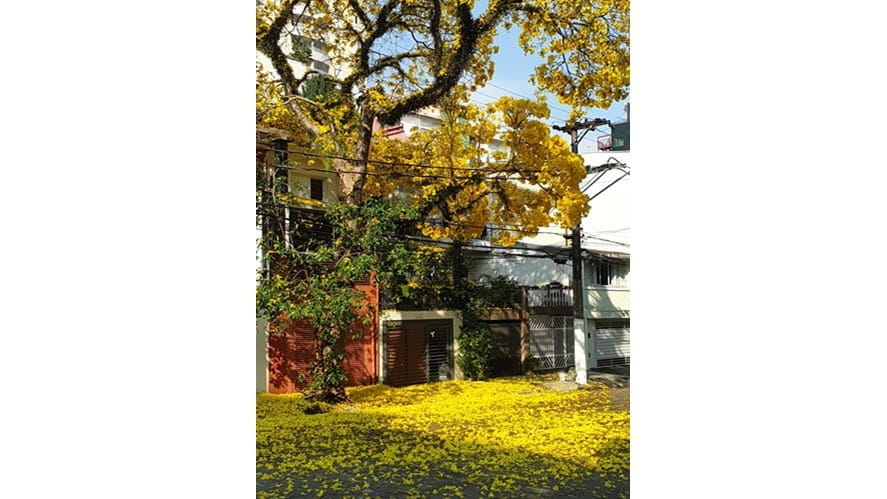We use cookies to improve your online experiences. To learn more and choose your cookies options, please refer to our cookie policy.


During the last days of August and the first days of September, if you wandered around the streets of São Paulo, you very likely noticed beautiful yellow flower trees. Many people did notice them and took the opportunity to take photographs and selfies and post them on social media.
These are the yellow-ipê trees (my personal favorite!), which were flowering during those days.
The ipê-tree actually encompasses a variety of species of plants: it is estimated that more than a 100 species of ipês are found over the world, 40 of which are found in Brazilian territory and 20 of which are only found here and nowhere else. Out of the 40 species found here, 25 are yellow-ipês, 8 are pink-ipês, and 7 are white-ipês. You can find them over the Atlantic rainforest as well as the Cerrado biome.
The flowering of the ypê trees is a very brief phenomenon that lasts up to 7 days only, and usually only occurs once a year, during the winter season. The flowering of pink-ipês happens first, followed by the yellow-ipês and then by the white-ipês (currently happening).
Yellow-ipê in the streets of São Paulo.
Pink-ipê.
The winter season of 2021 that is now coming to an end has been particularly dry in many parts of Brazil. In August, many areas measured the air humidity below 20% for more than 5 hours straight, during many days in a row. As a comparison, the recommended level for human comfort and health is around 60%.
The ypê trees shown above react to the lack of water available in the soil by producing flowers that will attract pollinators, which will help produce seeds and which will eventually become new trees. It is an adaptation that helps the survivability of the species.
Overall, over the past year (since September 2020) there has been much less rainfall than the average in a large portion of the country. This leads to many impacts, and most of them are very identifiable.
One example is the rising prices of food in general. Lack of rainfall and water in the soil impacts the harvesting of many agricultural goods, such as corn and soy, decreasing their supply and therefore raising their prices. These commodities are usually used as food for livestock, which makes it more costly and, again, leads to higher prices all around.
Another identifiable example is the rampant price of electricity.
Electricity in Brazil is mostly produced by Hydropower (in particular that of the storage type): it uses a dam to store water in a reservoir. Electricity is produced by releasing water from the reservoir through a turbine, which activates a generator.
The water of the reservoir comes from rainfall and rivers that are collected and drained over the drainage basin and are eventually stored. If rainfall is scarce over the drainage basin, it impacts the level of the reservoir. The less water, the less capacity of generating electricity - therefore, less supply and higher prices.
Speaking of rivers and drainage basins…
This Friday, 10th September, IGCSE and IB Geography students at BCB will be traveling to Itatiaia National Park, State of Rio de Janeiro, in order to investigate more closely how the characteristics of a river change as you move upstream. They will be taking measurements and collecting data in different sites about the width, average depth, velocity, discharge, bedload size and shape and will use this data to write their coursework and IA essays.
The trip should take place during the days of the flowering of the white-ipês (see below), which is the shortest of them all, and very impressive to see: it marks the ending of the winter season and the beginning of spring (which is officially to start on 22nd September). Try not to miss it!
White-ipê in the city of Penápolis.